
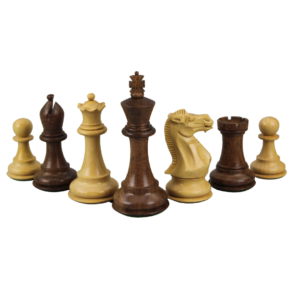








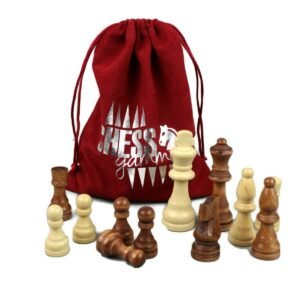
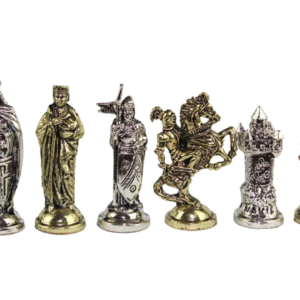
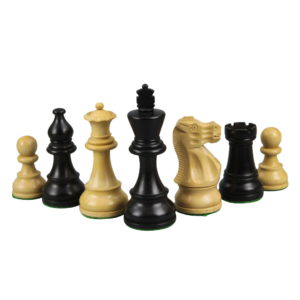

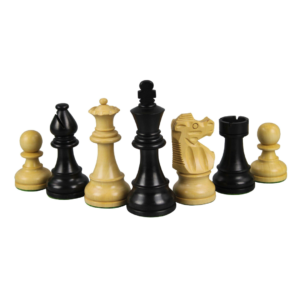

In the timeless game of chess, the pieces themselves hold a unique allure, embodying centuries of history, strategy, and artistry. Far more than mere tools of gameplay, chess pieces represent a delicate balance between function and beauty. From elaborately carved wooden kings and queens to sleek modern designs crafted from metal or glass, every chess piece tells a story of cultural significance, tradition, and craftsmanship. These small yet powerful objects are not just game pieces—they are symbols of human creativity and intellectual pursuit. Their evolution mirrors the history of the game itself, blending aesthetic elegance with practical purpose.
The origins of chess can be traced back over 1,500 years to northern India, where the game known as chaturanga first appeared. As the game spread across Persia and later into the Islamic world, chess pieces began to evolve, reflecting the cultural and artistic influences of each region. Persian chess sets introduced pieces with distinct forms, though Islamic art, which often avoided human representation, led to abstract and geometric designs.
The most significant transformation in chess piece design came with the Staunton pattern, introduced in 1849 by Nathaniel Cook and endorsed by the British chess master Howard Staunton. This design became the gold standard for competitive play, with its clear, recognizable shapes and balanced proportions. The Staunton design brought uniformity to international tournaments and remains the official design used in chess competitions today. Over time, however, various cultures have continued to create their own interpretations, blending traditional forms with local artistic sensibilities.
Creating chess pieces is a meticulous process that has evolved alongside advancements in technology. Traditional wooden chess pieces begin their journey as raw blocks of wood, often sourced from high-quality materials such as boxwood or ebony. Skilled artisans use lathes to carve the basic shapes, followed by hand-carving intricate details on the knight’s mane or the crown of the queen. Each piece is then sanded to a smooth finish before being polished, stained, or lacquered to enhance its appearance and durability.
Metal chess pieces, on the other hand, are typically produced through casting processes. Molten metal, such as brass or pewter, is poured into moulds shaped like the desired chess pieces. Once cooled, these pieces are polished and sometimes coated for added durability and aesthetic appeal. Plastic chess pieces, commonly used in tournaments and schools due to their affordability and durability, are made using injection moulding. This method allows for mass production while still maintaining consistent quality.
In high-end chess sets, artisans might go further by hand-painting details or adding luxurious touches such as felt bases, precious metal accents, or gemstone inlays. Each handcrafted set is a testament to the skill and dedication of the craftspeople behind them.
The materials used to create chess pieces play a significant role in their aesthetic and tactile qualities. Wood remains one of the most traditional and respected materials, favoured for its natural beauty and timeless appeal. Ebony, rosewood, and boxwood are particularly prized, each bringing distinct textures and colours to the chessboard. These materials are often used in luxury sets due to their durability and fine grain, which allows for intricate carvings.
Metal chess pieces exude a sense of sophistication and durability. Brass and pewter are popular choices, offering a sturdy feel and elegant metallic finish. Some modern sets incorporate aluminium or stainless steel for a sleek, contemporary look.
Plastic pieces, while not as luxurious as wood or metal, have their own advantages. They are lightweight, durable, and affordable, making them ideal for tournaments, educational settings, or casual play. High-quality plastic sets can mimic the look of wood or metal at a fraction of the cost.
Other materials such as glass, marble, and stone are often reserved for decorative sets. Glass pieces can range from minimalist modern designs to intricate hand-blown creations, while marble and onyx sets add a luxurious, heavyweight feel, making them perfect for display rather than everyday play.
While the Staunton design remains the universal standard for competitive chess, there is an incredible variety of chess piece styles available. Themed sets draw inspiration from history, mythology, popular culture, and art. From medieval knights to ancient Egyptian pharaohs, these sets often serve as both functional game pieces and artistic expressions.
Luxury chess sets elevate the art of chess to new heights, often featuring hand-carved pieces crafted from rare woods, precious metals, or even adorned with jewels. These sets are designed for collectors and connoisseurs who appreciate the craftsmanship and exclusivity they represent.
For those who prioritize convenience, travel sets offer portable solutions. These often feature compact pieces that are magnetized or pegged, ensuring stability during travel. Although simpler in design, travel chess pieces maintain functionality without sacrificing quality.
One often overlooked yet crucial detail in chess piece design is whether the pieces are weighted. Weighted chess pieces have metal or additional materials embedded at their base to provide extra stability during gameplay. This added weight ensures that pieces remain steady on the board, particularly useful for rapid play formats such as blitz or bullet chess.
The degree of weighting can vary—terms like single, double, or triple-weighted refer to how much additional mass has been added. Triple-weighted pieces offer the most stability, making them popular among serious players. The extra weight also enhances the tactile experience, providing a satisfying heft that many enthusiasts appreciate.
Non-weighted pieces, while lighter and typically more affordable, are generally used in casual settings or travel sets where portability and convenience are prioritized over stability and feel.
Chess pieces are crafted across the globe, with certain regions renowned for their expertise and craftsmanship. India, particularly cities like Amritsar and Jaipur, has a long-standing reputation for producing high-quality wooden chess sets. Artisans in these regions are known for their intricate hand-carving skills, especially when working with luxurious materials like ebony and boxwood.
Germany has a rich tradition of precision craftsmanship, with brands such as Garde producing premium chess clocks and finely crafted chess sets. German artisans are celebrated for their attention to detail and high-quality manufacturing processes.
Russia also holds a special place in chess history, not only for producing legendary players but also for its distinctive Soviet-era chess sets, known for their bold, minimalist designs. These vintage sets remain highly collectible today.
China plays a significant role in mass production, particularly for plastic chess sets. Chinese manufacturers produce affordable and durable pieces that are widely used in schools, clubs, and tournaments around the world. Despite their lower cost, many of these sets maintain a high standard of quality.
Beyond their functional role in gameplay, chess pieces are often viewed as works of art. Master artisans dedicate years to perfecting their craft, producing pieces that are as beautiful as they are practical. Luxury chess sets, in particular, reflect this commitment to artistry, often incorporating fine details that elevate the aesthetic appeal of each piece.
The creation of high-end chess pieces can involve numerous specialized skills, from hand-carving and painting to metalworking and gem setting. The knight piece, known for its complexity, is often seen as a benchmark for an artisan’s skill due to its intricate design and the level of detail required.
For collectors and enthusiasts, the craftsmanship behind a chess set adds emotional and monetary value. Owning a handcrafted set made from premium materials can be as rewarding as the game itself, representing both intellectual and artistic appreciation.
When selecting chess pieces, several factors come into play. The first consideration should be the intended use—whether for competitive play, casual games, or decorative purposes. Tournament players will benefit from Staunton-design pieces made from durable materials like plastic or wood, while collectors might gravitate toward luxury handcrafted sets.
Material preference plays a significant role in the decision-making process. Wooden pieces offer a classic feel and timeless elegance, while metal pieces provide durability and a modern aesthetic. Budget is another crucial factor, as high-quality wooden or metal sets can be a significant investment, whereas plastic sets offer affordability without compromising functionality.
The weight of the pieces should also be considered, especially for serious players. Weighted pieces provide better balance and a satisfying feel during gameplay. A clear, visible design and comfortable handling are essential, especially for extended play sessions.
Chess pieces are more than just components of a strategic board game—they are embodiments of history, craftsmanship, and artistry. From ancient origins to modern designs, each set reflects cultural influences, skilled craftsmanship, and personal style. Whether made from luxurious wood, elegant metal, or practical plastic, every chess piece carries with it a legacy of human ingenuity and passion for the game.
For collectors, players, and enthusiasts alike, chess pieces offer a unique blend of beauty, tradition, and functionality. Investing in a quality set enhances not just the playing experience but also the appreciation for one of the world’s oldest and most revered intellectual pursuits. The enduring allure of chess pieces lies in their ability to combine history, strategy, and art into a timeless symbol of human creativity.